The Palace of Accumulated Purity, located in the Forbidden City Six Eastern Palaces area, was mainly used as the imperial concubines' residence in Ming (1368~1644) and Qing Dynasty (1644~1911). It was transformed into crown prince's palace for a period. Now, the Palace is the Guqin Gallery open to the public.
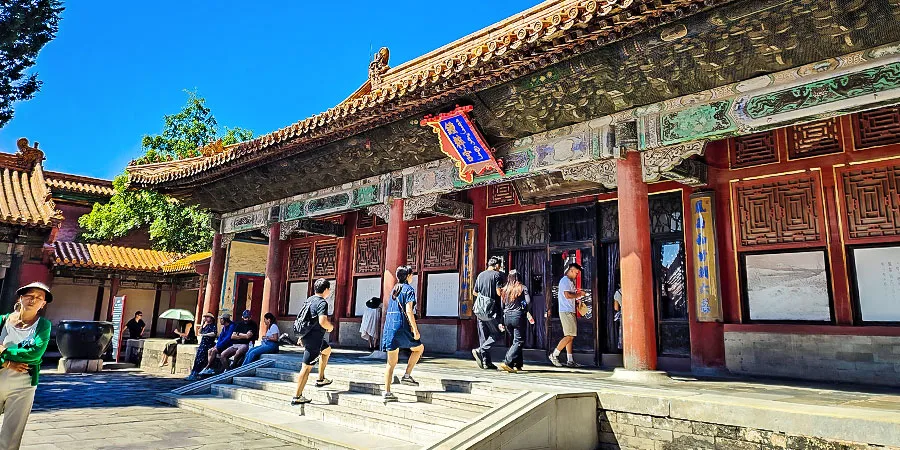 |
| Palace of Accumulated Purity |
History
The Palace of Accumulated Purity, initially called Palace of Harmonious Brightness upon its completion in 1420, served as a home for the emperor's concubines. Renamed "Accumulated Purity" in 1535, it underwent renovations in 1571 for the crown prince, with the main hall and rear hall relatively named "Rising Dragon" and "Wisdom and Virtue" expressing high hopes for the future ruler. Rebuilt in 1655, it adopted the original layout and restored as imperial concubines' residence.
What to See Now: Architecture & Exhibition
In this two-courtyard complex, you'll see the front yard consisting of a main hall and two side halls and the back yard of a similar layout added with a well stands in the southwest corner. After passing through its main gate, don't miss the intricate second gate, the only one featuring two pendant columns shaped in lotus and the lintel painted with florals.
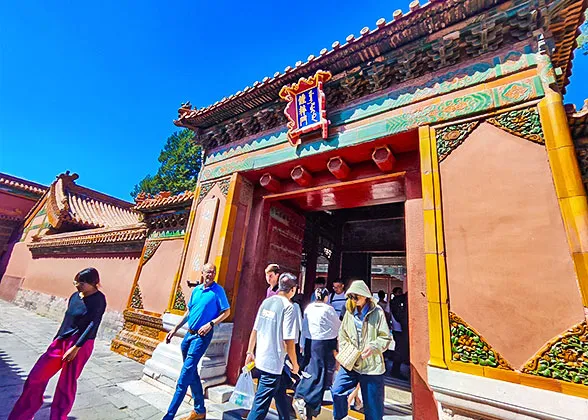 | | Gate of Accumulated Palace | | 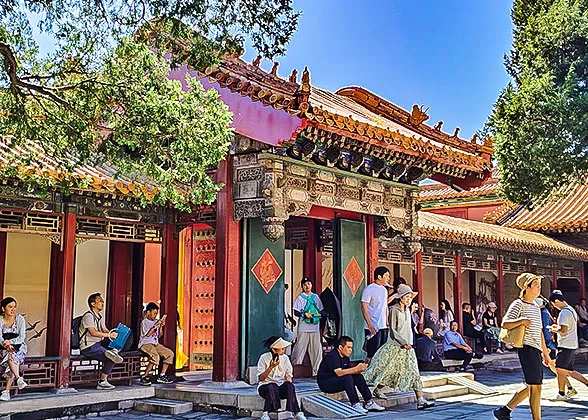 | | The Second Palace Gate | |
Some of the architectural details exude a gentle and refined charm, like the eaves decorated with intricate paintings of vivid landscapes, flowers, and birds in light green hues and gold lines. Ink paintings of mountains and cranes grace the corridors, enhancing its elegance further.
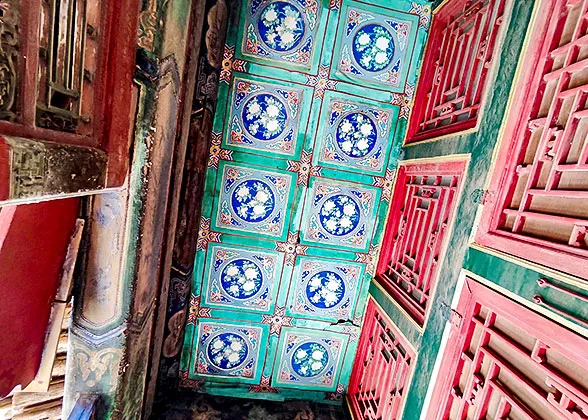 | | Floral Patterns of the Ceiling | | 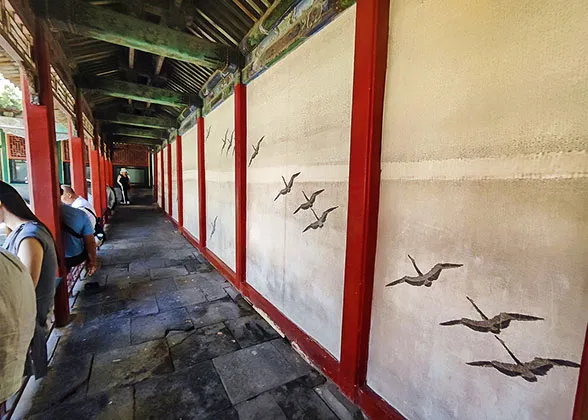 | | Paintings on the Wall of the Palace | |
Inside the buildings, there is an exhibition of Guqin, a seven-stringed instrument of 3,000-year history in China, produces a deep and melodious sound and is favored by ancient Chinese literati not only for entertainment but also for embodying their distinguished spirit. Visitors will admire 55 exhibits, including nine selected Guqin from 650 AD and related artifacts like music scores and jade ornaments. You can also witness restored scenes of playing the instrument, and learn about their production through videos.
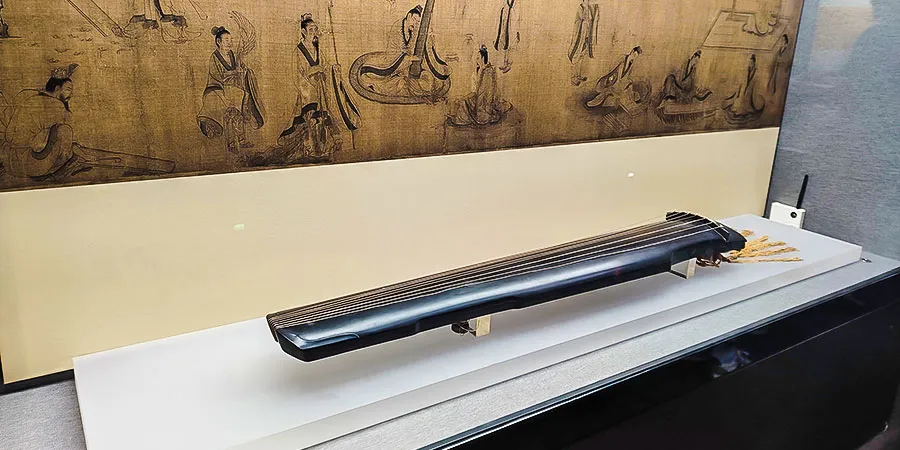 |
| Exhibited Ancient Instrument |
Who Lived in the Palace of Accumulated Purity?
Emperor Wanli: From a Promising Prince to Lazy Ruler
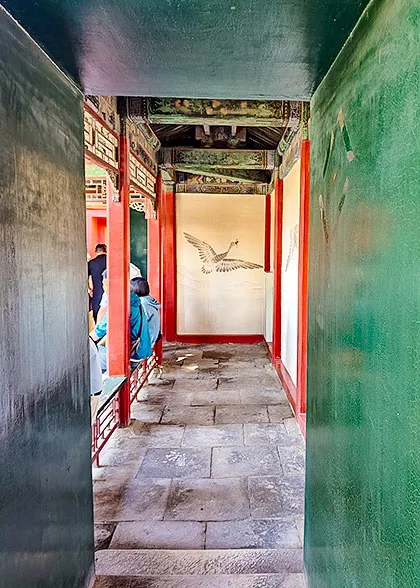 |
| A Corner of the Palace |
At six, Wanli (1573~1620) became the first resident crown prince in the Palace of Accumulated Purity. Under the strict guidance of his mother and tutor, he was a diligent student, reciting Confucian classics daily and facing harsh penalties for any mistakes like longtime kneeling for tearing up books, which paved the way for his rule. He initially shone as a great ruler by reforms to revitalize economy. But as aged, his enthusiasm waned. He even rejected to manage state affairs for over two decades, ultimately steering the empire towards decline.
Zhu Ciling: Disappeared in war, and Back with Identity Enigma
Zhu Ciling (1629~1644), the last Ming crown prince, resided in the Palace of Accumulated Purity at the age of two. He received rigorous education from top scholars and was shielded from negative influences by being surrounded by elderly maids.
When the Forbidden City fell in 1644, marking the end of the Ming Dynasty, he vanished. That winter, a young boy came to Beijing and claimed to be Zhu Ciling, which sparked debate over the boy's authenticity. Some previous Ming officials believed he was true, while the Qing court insisted he was an imposter and executed him. It is rumored that the Qing Dynasty had deliberately labeled him as a fake to eliminate potential threats.
Empress Dowager Xiaojingcheng: Facing Dilemma as Emperor's Foster Mother
After Xianfeng (1831~1861) lost his birth mother at ten, Empress Dowager Xiaojingcheng (1812~1855) raised him alongside her own son, Yixin (1833~1898), in the Palace of Accumulated Purity. When facing succession, both of the boys emerged as candidates. Though loving her foster son, she showed a preference for her own son to ascend the throne.
Ultimately, her foster son became the emperor, and she was granted only the 2nd rank among the late emperor's consorts. It wasn't until her deathbed that he reluctantly bestowed her the 1st rank as Empress Dowager, which shows the emperor's dissatisfaction for his foster mother.
Empress Longyu's Lonely and Financially Strained Life in the Palace
Longyu (1868~1913) became Emperor Guangxu (1871~1908)'s empress under pressure from Empress Dowager Cixi, who expected her to keep a close watch on Guangxu. Her court life was lonely, consisting of morning and evening visits to the empress dowager and emperor, followed by seclusion in the Palace of Accumulated Purity. She often sat hunched alone in the corridor, accompanied by old servants.
In the waning days of the Qing Dynasty, the imperial harem struggled financially. As the manager, feared to anger Empress Dowager Cixi by the terrible finance, Longyu deprived herself of necessities, even pawning her jewelry to maintain the expenses.
- Last updated on Oct. 15, 2025 by Jally Zhang -






